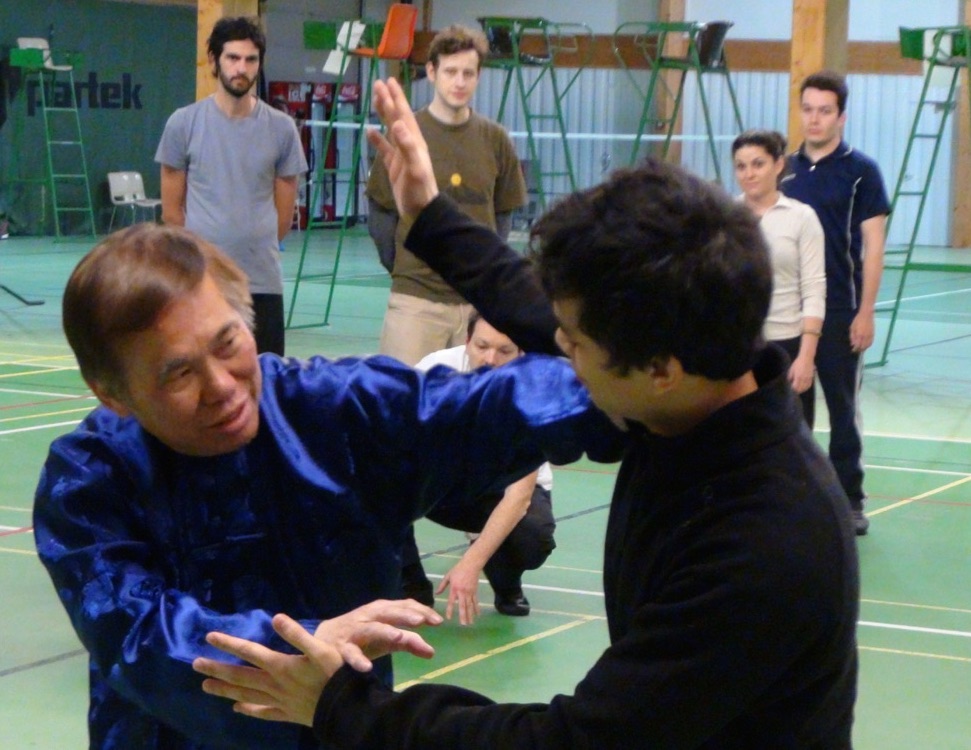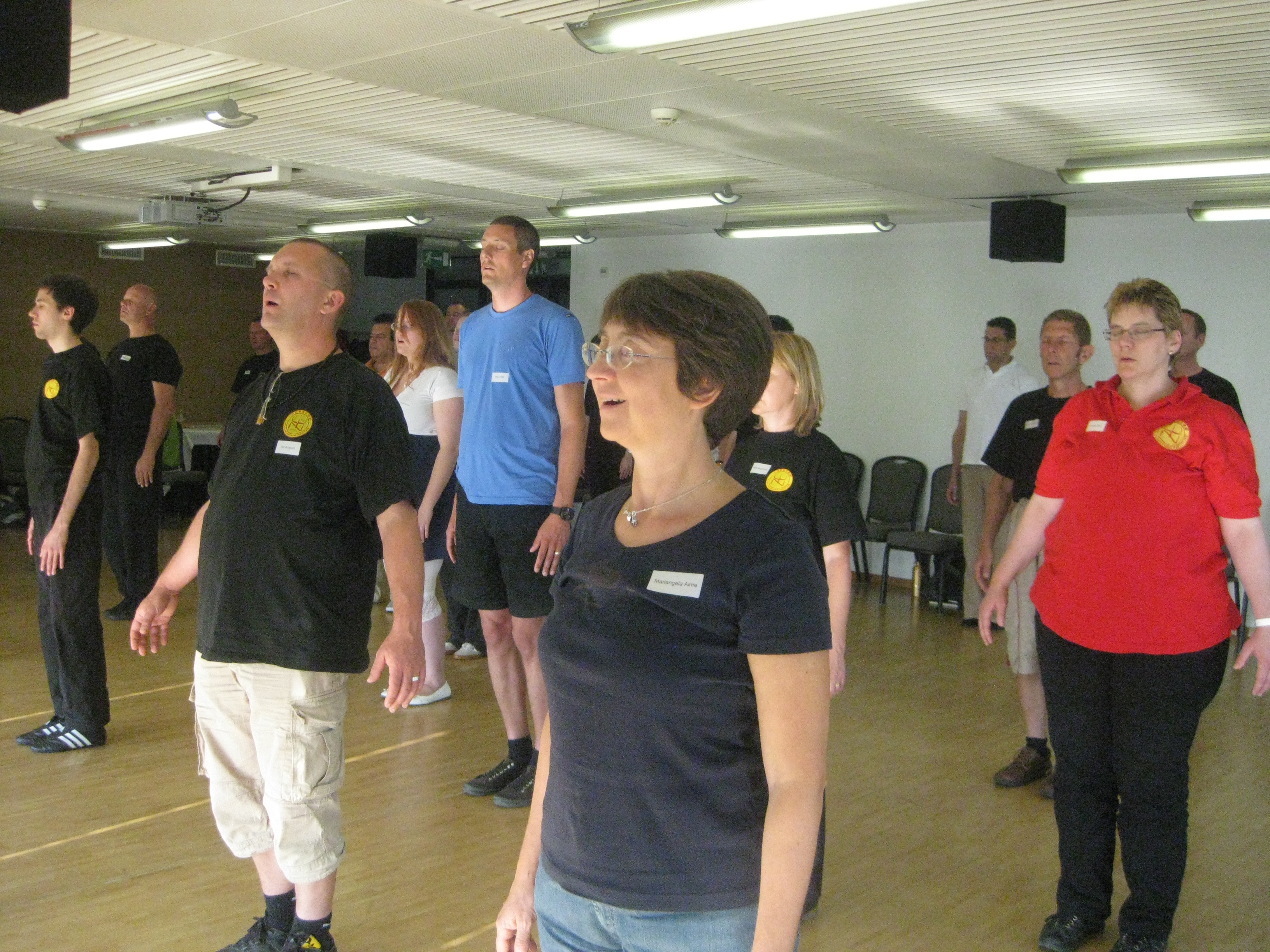SKILLS AND TECHNIQUES IN KUNGFU AND CHI KUNG

It is very beneficial to differentiate between skills and techniques. This difference has been in kungfu and chi kung history for a long time, but we in Shaolin Wahnam are amongst the very few who differentiate them and benefit tremendously from the differentiatation.
In English, and other languages, the fact that we have two different words, “skills” and “techniques”, shows there is a difference. In Chinese (Mandarin), skills are referred to as “gong”, pronounced as /kung/ as in Cantonese; and techniques are “fa”, or “fatt” in Cantonese.
The term “kungfu” refers to a training of skills, not a learning of techniques. That was actually what I did, and what kungfu practitioners did in the past. My sifu showed me a technique, and I practiced and practiced the technique for a long time until I was skilful. I can remember clearly that my sifu, Sifu Ho Fatt Nam, told me, “We practice kungfu, not just learn it.”
“Shu” in “wushu”, for example, which means “martial art”, is more comprehensive. It includes the concept of both skills and techniques.
“Chi kung”, which means “energy art", is clearly indicative like the term “kungfu”, though many practitioners today may not realize their significance. The “kung” in the two terms indicate that “practicing” and not “learning” is the key to success. While learning is acquiring new material, practicing is going over and over again material already learned.
To be smart, practicing is not merely going over learned material, it is going over learned material in a way it should be done, i.e. correctly or at least appropriately. In kungfu it is developing the skills to be combat efficient. In chi kung it is developing the skills to manage energy.
As an academic definition, a technique is the way of performing certain action. A skill is how well the action is being performed. Techniques deal with “what”, and skills deal with “how”.
Both techniques and skills are important, but which is more important? Generally, skills are more important than techniques, though many people may not realize this fact. It is precisely because most kungfu practitioners do not have the necessary skills though they know a lot of techniques that they are often beaten by other martial artists. Boxers, for example, do not know many techniques, but they have a lot of skills. Kungfu practitioners are usually beaten by Boxers.
If their skills level are similar, then techniques become important. If two kungfu practitioners have similar low level of skills, the one with better techniques will defeat the other. If two Boxers have similar high level of skills, the one with better techniques will defeat the other.
In my combat strategy, I have mentioned that even when an opponent has higher combat skills, unless his skills are overwhelmingly higher, you can still beat him in free sparring if you have prepared well with a pressing combat sequence. Does this contradict the above statement regarding better skills winning a combat? No, in this strategy, you have trained your combat sequence so well, i.e. you have excellent skills in performing the sequence, not excellent techniques in the sequence, that you don’t give him a chance to use the combat skills of his techniques.
Moreover, if you have chosen your combat sequence well, there are no counters in the repertoire of his martial art to counter many of your techniques. In theory, it does not matter how good your opponent is in Boxing, Kick-Boxing, Cage Fighting, Mixed Martial Art, Wrestling, Taekwondo, Karate or any other style of martial art, you press in so effectively, with your own safety assured, that he has no chance to use his art.
For convenience, combat skills can be classified into three areas, namely form, force and speed. In other words, how skilful you apply your combat sequence on your opponent in free sparring depends on how picture-perfect, how forceful and how fast you apply the continuous flow of techniques on him.
A common mistake amongst practitioners, including our students, is to neglect their picture-perfect form when they attempt to be fast. In being fast, they also lack force. The Flow Method or the Force Method in our school is an effective way to develop these three combat skills of picture-perfect form, force and speed. First, your form must be picture-perfect. Then you introduce force and speed. When you have force and speed, you must maintain your picture-perfect form.
Similarly, techniques may be classified into three areas, namely hand movement, body movement and foot movement. You may notice that these three aspects – hands, body and feet – constitute the three external harmonies.
Many practitioners, apart from those in our school, only focus on hand movement, and neglect body movement and foot movement or footwork. In some martial arts, body movement is absent. Their practitioners bounce away to avoid being attack. In our case, unless the attack is penetrating, we only shift our body backward without moving our feet. Using body movement allows us to be more combat efficient, and is an important aspect in our strategy of a pressing sequence.
Skills and techniques, of course, apply to chi kung too. Indeed, more than 80% of chi kung practitioners, including masters, do not derive the benefits of chi kung simply because they lack the skills to practice their techniques as chi kung or energy art. Hence, they practice their chi kung techniques, which are genuine, as gentle physical exercise, just as 90% of Taiji practitioners today practice Taijiquan techniques as external dance-like forms and not as an internal martial art.
Differentiating between skills and techniques, and working on them, especially with the great benefit of heart-to-heart transmission, make us ridiculously cost-effective. It is so ridiculous, in a good sense, that most people, including myself 20 years ago, may not believe it possible. Our typical students, for example, can not only generate an energy flow, but direct the energy flow to whatever internal organs we want, or at any one of the five levels in our body. Such skills belong to genuine masters, yet our typical students can accomplish the skills in just a few hours!
Wong Kiew Kit
12th January 2016

